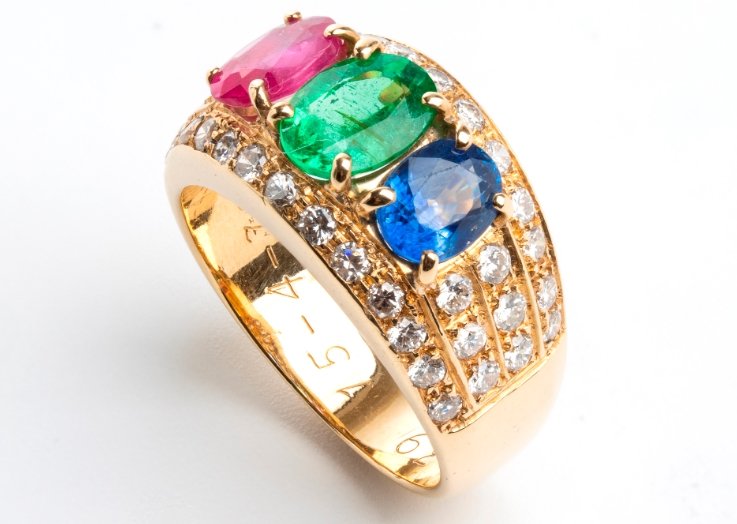On an ordinary afternoon in 2019, retired firefighter Mark Sell took a walk with his metal detector in Norfolk, England. He had used it only a handful of times before, never discovering much of significance. But as he swept the ground, a faint beep caught his attention. Curious, he started digging. Nine inches down, something glimmered in the dirt—a thin line of gold.
Brushing away the mud, Sell found himself holding an extraordinary medieval ring. The piece, adorned with a sapphire and surrounded by emeralds and garnets or rubies, appeared remarkably well-preserved. Experts would later confirm its origins dated back to the late 12th or early 13th century, and it likely belonged to a bishop.
Now, years after its discovery, the ring has found a new home, selling for about $24,000 at auction.
The History Behind the Treasure
The ring’s discovery site, King Row in the Norfolk village of Shipdham, holds a deep religious history. Dating back to at least the Norman Conquest of 1066, the settlement became one of England’s largest. All Saints Church, which still stands today, was built in the 12th century, and the Bishop of Ely later constructed a manor house in the village during King Henry III’s reign (1207–1272).
Given this background, experts believe the ring likely belonged to Hugh of Northwold, a bishop who played a significant role in the medieval church. His position and influence made him an ideal candidate to own such an ornate piece of jewelry.

A Highly Prized Relic
After Sell unearthed the ring, the Norwich Castle Museum and the British Museum both expressed interest in it. However, the sale was ultimately handled by Noonans Mayfair, a London auction house specializing in rare historical items. The auctioneers initially estimated the ring’s value between $19,000 and $23,000. When the bidding closed, the final price landed just above expectations—about $24,000.
Jewelry expert Laura Smith from Noonans described the piece as a rare example of medieval craftsmanship. Similar rings have been found in the past, often linked to high-ranking church officials.
Some comparable rings include:
- Walter de Gray’s ring – The Archbishop of York’s ornate ring from the early 13th century, now displayed at York Minster.
- The Bishop of Chichester’s ring – A stunning medieval relic tied to the English clergy.
- The Whithorn Cathedral ring – A historical artifact showcasing the religious wealth of the time.
The Unexpected Thrill of Discovery
For Sell, the find was nothing short of incredible.
“I was amazed to see a thin line of gold in the clod of mud that I had dug up,” he recalled. “As I wiped away the mud, I could see the bezel of a medieval gold jeweled ring. I could also see that the ring was complete with all of the original jewels still in place and was in pristine condition.”
His reaction echoes the dreams of many metal detectorists—an everyday outing turning into a moment of historical significance. Many such finds end up enriching our understanding of medieval life, offering glimpses into the past through the treasures left behind.
The discovery of this ring not only highlights the luck and skill of amateur treasure hunters but also adds another fascinating chapter to England’s rich medieval history.














